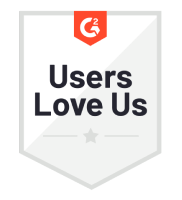It’s Time for a New Cloud Directory Platform
- Eliminate the need for point solutions for SSO, network access, and device management — macOS, Windows and Linux
- Lower your directory TCO by >50% while improving the end-user experience and streamlining admin tasks
- Provide seamless access to the resources your users need, while keeping security risks at bay with granular access control based on trusted identities, networks, and devices


Top rated Directory Service platform on G2 Crowd by Admins
Trusted by Organizations Worldwide







